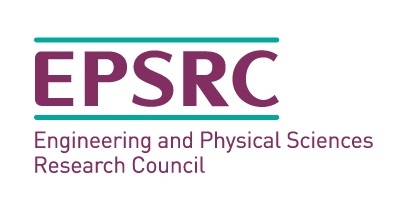
March 27, 2017
By: Michael Feldman
The Engineering and Physical Sciences Research Council (EPSRC) has allocated £20 million for six new tier 2 supercomputing centers spread across the United Kingdom. The facilities are aimed at supporting both academic and industrial users and will house medium-sized supercomputers for scientific research and engineering.
 “These centers will enable new discoveries, drive innovation and allow new insights into today’s scientific challenges,” said Professor Philip Nelson, EPSRC’s Chief Executive. “They are important because they address an existing gulf in capability between local university systems and the UK National Supercomputing Service ARCHER. Many universities are involved in the six new centers, and these will give more researchers easy access to high performance computing.”
“These centers will enable new discoveries, drive innovation and allow new insights into today’s scientific challenges,” said Professor Philip Nelson, EPSRC’s Chief Executive. “They are important because they address an existing gulf in capability between local university systems and the UK National Supercomputing Service ARCHER. Many universities are involved in the six new centers, and these will give more researchers easy access to high performance computing.”
Some examples of industry use cases for the new HPC resources include autonomous vehicles development, jet engine design, and materials discovery for energy generation and storage. Academic researchers will also have access to these centers to support a wide range of scientific applications. According to EPSCR, some of the centers resources will be freely available to researchers and others will provide access to industrial users, which presumably will involve some monetary compensation or sharing of intellectual property.
One way in which these new centers will be different from that of the UK’s ARCHER service is in providing access to more novel HPC architectures. Currently, the ARCHER system is based on a Cray XC30 system, which is powered exclusively by Intel Xeon (“Ivy Bridge”) processors. The new centers will provide users access to large GPU-accelerated systems, as well as ARM-powered clusters.
Here is a synopsis of the six facilities:
Great Western 4 (GW4) HPC Centre for Advanced Architectures
This center will house Isambard, an ARM-based supercomputer. As we reported in January, Isambard will be a Cray cluster based on the CS400 platform. We have since learned that the machine will be equipped with Broadcom’s Vulcan processor, whose IP is now owned by Cavium. Isambard will be the UK’s (and the world’s) first decent-sized production HPC system powered by ARM processors. The effort is being led by Simon McIntosh-Smith at the University of Bristol, and the initial outlay will be £3 million.
Hub in Materials and Molecular Modelling
This center will be principally devoted to members of the Materials and Molecular Modelling (MMM) Hub, but also the wider MMM and tier 2 communities. For the most part, the MMM community is made up of physicists, chemists, engineers, materials scientists, biologists, and geologists who employ HPC for their simulation needs. The system to be housed at this center, known as Thomas (after the polymath Thomas Young,) will be aimed at an array of applications in energy, healthcare, and the environment. The project will be led by Angelos Michaelides at the University (UCL) and has been allocated £4 million to get up and running.
Joint Academic Data science Endeavour (JADE)
JADE will represent the largest GPU-powered HPC facility in the UK. The system will be composed of servers with two 20-core Intel Xeons plus eight NVIDIA Tesla P100 GPUs lashed together with the NVlink interconnect. Each server will also be equipped with an 8TB SSD. The center will primarily be devoted to machine learning/AI and related data science applications. These include areas such as natural language processing, autonomous machines, medical imaging, and drug design. Molecular dynamics will be an additional application focus. The effort will be led by Mike Giles at the University of Oxford, and will initially have £3 million worth of funding to work with.
HPC Midlands Plus
This facility will be part of a new center of excellence at Loughborough University’s Science and Enterprise Park, and will feature a machine with 14,336 Intel Xeon processors (E5-2680 v4), along with with 65.5 TB of memory. The cluster will be hooked together with EDR InfiniBand, and feature a 1 PB file store. It will also contain a large memory Power8 component consisting of five 20-core nodes each with 1 TB of memory for massive data processing and high memory bandwidth computing with a dedicated 10 TB high speed file store.* Four new research software engineers will be available across the sites to help users to scale their codes to the new system and develop new uses of the facility. The center will focus in the areas of materials modeling, engineering simulation and will support the work of the quantum technologies centers. The effort will be directed by Steven Kenny at Loughborough University and will ramp up with a £3.2 million budget.
Edinburgh Parallel Computing Centre (EPCC) Tier-2 HPC Service
This center will focus on a significant enhancement to Cirrus, a 56-node SGI ICE XA system. The upgrade will result in a system five times as large as the original installation. The original Cirrus was used primarily for CFD and FEA simulations and employed by users in automotive, aerospace, energy, oil and gas, general engineering, life sciences and financial services. In addition to the cluster upgrade, a next generation storage subsystem is being installed, which will provide a common data store with other supercomputers. The tier 2 center is being led by Mark Parsons, University of Edinburgh and has an initial budget of £2.4 million.
The official kick-off for the new centers will take place in a formal ceremony on March 30 at the Thinktank science museum in Birmingham, UK.
*[Editor's note: The orginal version of this article described an older system at the Midlands site. It has since been updated with to reflect the new hardware.]
